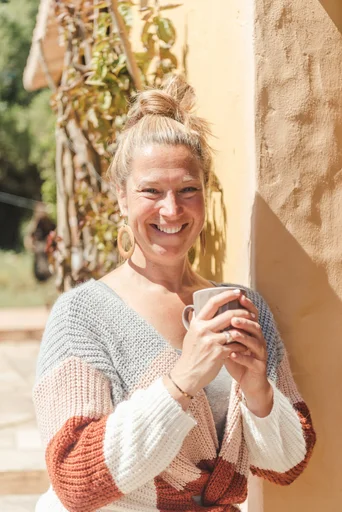How to Use and Strengthen Your Glutes in Yoga Poses | Yoga + Anatomy

Understanding Your Glutes and Their Importance in Yoga
When practicing yoga, understanding the role of glutes is crucial for a safe and effective practice. The glutes, comprising the gluteus maximus, gluteus medius, and gluteus minimus, play a significant part in body movement and posture.
Anatomy of the Glutes
The anatomy of the glutes reveals their pivotal role in body movement. The gluteus maximus is the largest muscle in the human body and is responsible for hip extension and external rotation. On the other hand, the gluteus medius and minimus aid in hip abduction and internal rotation. These muscles work together to provide stability during various physical activities.
The Role of Glutes in Body Movement
Scientific research findings have shown that certain yoga poses can serve as strengthening stimuli for both the gluteus maximus and medius muscles. For instance, the Half Moon Pose and Warrior Three Pose were found to have the highest activation for these muscles among healthy young adults with varying yoga experience (International Journal of Sports Physical Therapy).
Glutes and Posture: A Vital Connection
Moreover, having strong glutes contributes to maintaining proper posture during yoga practice. They provide essential support to the pelvis, lower back, and hips, aiding in spinal alignment and overall stability.
Why Strengthening Your Glutes Matters in Yoga
Strengthening your glutes is not only beneficial but also essential for a safe and healthy physical yoga practice.
Preventing Injuries and Enhancing Stability
By actively engaging these muscles, practitioners can reduce the risk of injuries by promoting stability throughout their practice. Strong glutes help distribute stress more evenly across the joints, preventing undue strain on other muscle groups (Yoga Journal).
Improving Yoga Performance Through Stronger Glutes
Additionally, having well-developed glutes can significantly enhance one's performance in various yoga poses. They contribute to better balance, endurance, and overall strength during challenging postures such as balancing poses or deep squats.
How to Use Your Glutes Effectively in Yoga Poses
After understanding the importance of glutes in yoga, it's essential to know how to effectively utilize them during practice. Proper activation and engagement of the gluteal muscles can significantly enhance the benefits of yoga poses.
Activating Your Glutes Before Yoga
Before diving into your yoga practice, it's beneficial to perform specific warm-up exercises that target the glutes. This helps activate and prepare these muscles for the upcoming physical activity. Simple warm-up movements such as hip circles, leg swings, and lunges can effectively engage the gluteal muscles and improve their responsiveness during yoga poses.
Warm-Up Exercises for Glute Activation
Hip Circles: Stand with feet hip-width apart and gently rotate your hips in circular motions, focusing on engaging your glutes.
Leg Swings: Holding onto a support for balance, swing one leg forward and backward, feeling the activation in your glute muscles.
Lunges: Perform dynamic lunges by stepping forward and backward, emphasizing the engagement of your glutes as you push back up to a standing position.
Mindful Engagement of Glutes During Yoga
During yoga practice, being mindful of how you engage your glutes is crucial for maximizing their benefits. Recognizing when and how to activate these muscles in various poses can lead to improved stability and strength throughout your practice.
Recognizing When and How to Engage Glutes in Various Poses
In poses such as Warrior I and II, focus on grounding through the outer edge of the back foot while gently squeezing the glutes to stabilize the hips. In Chair Pose, actively engage your glutes by sitting back as if lowering onto a chair while keeping your chest lifted.
The Impact of Proper Glute Use on Yoga Practice
Proper utilization of the gluteal muscles not only enhances stability but also promotes better alignment and posture during yoga poses. By consciously engaging these muscles, practitioners can experience increased strength and endurance, leading to a more effective yoga practice overall.
Top Yoga Poses to Strengthen Your Glutes

Incorporating specific yoga poses into your practice can effectively target and strengthen the glutes, promoting both physical strength and inner harmony. These poses not only sculpt the gluteal muscles but also enhance flexibility, contributing to a well-rounded yoga practice.
Bridge Pose (Setu Bandhasana)
The Bridge Pose is a fundamental posture for engaging and strengthening the glutes. To perform this pose, lie on your back with knees bent and feet flat on the floor. As you lift your hips toward the ceiling, focus on pressing through your heels to activate your glutes. This action not only strengthens these muscles but also promotes stability in the pelvis and lower back, making it an essential pose for overall lower body strength.
Warrior III (Virabhadrasana III)
Warrior III is a powerful standing pose that requires significant balance and strength, particularly in the glutes. As you extend one leg backward while leaning forward, the engagement of your standing leg's gluteal muscles is crucial for stability. This pose not only strengthens the supporting leg's glutes but also enhances overall balance and stability throughout your yoga practice.
Chair Pose (Utkatasana)
Chair Pose is renowned for building endurance in the lower body, especially in the quadriceps and glutes. By sitting back as if lowering onto an invisible chair while keeping your chest lifted, this pose actively engages and strengthens the gluteal muscles. The sustained engagement of these muscles during Chair Pose not only promotes strength but also contributes to improved posture and stability in various yoga postures.
Locust Pose (Shalabhasana)
The Locust Pose, also known as Shalabhasana, is a dynamic yoga posture that effectively targets and strengthens the back and glutes simultaneously. This pose involves lifting the legs, chest, and arms off the mat, engaging the muscles along the spine, including the erector spinae and gluteal muscles.
As you lift your legs and chest off the ground in Locust Pose, you actively strengthen your glutes by pressing into the floor with your legs. This action not only promotes lower body strength but also contributes to improved stability and endurance in the gluteal muscles. The engagement of these muscles supports the lower back and aids in maintaining proper spinal alignment during the pose.
Mindfully practicing Locust Pose can help sculpt and tone your glutes, promoting both physical strength and flexibility. By incorporating this posture into your regular yoga practice, you can experience enhanced activation of these essential muscles, contributing to a well-rounded approach to yoga poses.
Integrating Glute Strengthening into Your Regular Yoga Practice
Creating a Balanced Yoga Routine
A balanced yoga routine should encompass a blend of strength and flexibility-focused poses to optimize glute health. Incorporating postures that specifically target the gluteal muscles, such as Warrior III and Lizard Pose, alongside hip-opening and stretching asanas, can promote overall lower body strength and flexibility. This combination not only strengthens the glutes but also ensures that they remain supple and functional, contributing to improved stability and mobility during yoga practice.
Listening to Your Body
It's essential to listen to your body's cues when integrating glute strengthening into your regular yoga practice. Adjusting the intensity and duration of glute-focused poses based on personal needs is crucial for preventing overexertion or strain. Pay attention to how your body responds to different poses and modify your practice accordingly. This mindful approach fosters a sustainable and safe progression in strengthening the glutes, promoting long-term health and well-being.
The Long-Term Benefits of Strong Glutes in Yoga
The long-term benefits of cultivating strong glutes extend beyond physical strength. Enhanced posture, reduced pain, and improved performance are among the many advantages. Strong gluteal muscles provide vital support for the spine and pelvis, leading to improved alignment and reduced discomfort during daily activities. Moreover, their role in stabilizing the hips contributes to better balance, agility, and overall performance in various yoga postures.
See Also
Discovering Flow: Unleashing Power On and Off the Mat | Baptiste Yoga
Creating Room for Your Yoga Journey | Yoga Philosophy: Yoga Sutra 1.2
Scoliosis and Yoga: Achieving Body Symmetry Through Practice
Relieving Low Back Pain: 5 Psoas-Releasing Poses for Prenatal Yoga
We bring back the importance of initiation into womanhood by Roos-Veerle Krijnen & Ella-June Henrard
Welcome to the Women’s Initiation Retreat by Naked Truth Retreats, a transformative journey into the depths of your True Feminine Nature. This retreat, scheduled from 17th to 24th August 2024 in Portugal, invites you to remember the sacredness and wholeness of your being.
Roos-Veerle Krijnen & Ella-June Henrard



